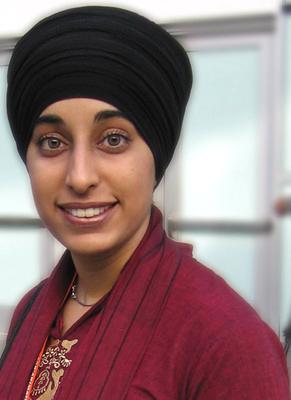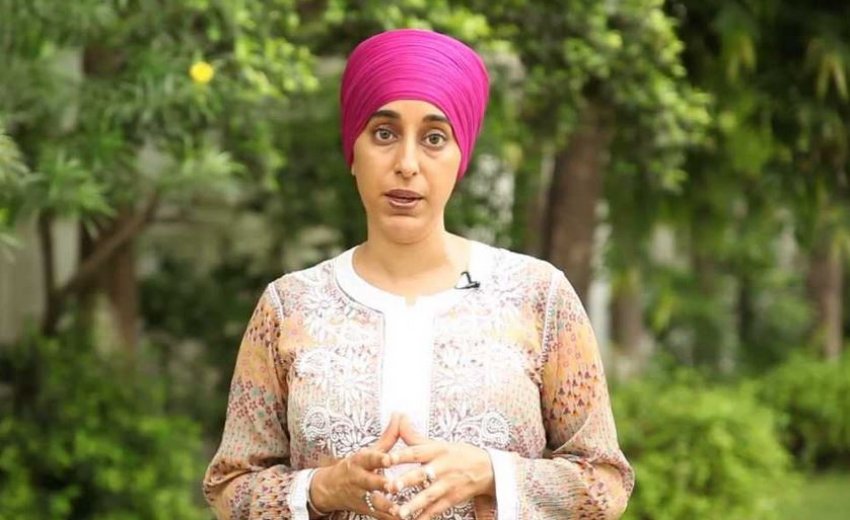 It
has been 24 years, yet the agony, pain, and scars remain for the Widows
of the 1984 slayings. Nothing can wipe the horror of the three days
following the assassination of Prime Minister, Indira Gandhi. Their
lives changed for the worst when their loved ones were massacred - they
became widows immediately after their husbands were killed. However,
the brutality did not end there instead; these women were gang raped in
front of their helpless children. Forgotten by the public at large;
they are alive, living in clearly demarcated yellow buildings in the
Tilak Vihar area of New Delhi and remain a symbol of the terror that
occurred in November 1984.
It
has been 24 years, yet the agony, pain, and scars remain for the Widows
of the 1984 slayings. Nothing can wipe the horror of the three days
following the assassination of Prime Minister, Indira Gandhi. Their
lives changed for the worst when their loved ones were massacred - they
became widows immediately after their husbands were killed. However,
the brutality did not end there instead; these women were gang raped in
front of their helpless children. Forgotten by the public at large;
they are alive, living in clearly demarcated yellow buildings in the
Tilak Vihar area of New Delhi and remain a symbol of the terror that
occurred in November 1984.
This settlement and the stories of these women are captured by film director Harpreet Kaur, in the movie entitled, ‘The Widow Colony – India’s Unsettled Settlement’. The 73 minute film is produced by Harpreet’s husband, Manmeet under the Sach Productions banner. Harpreet was inspired to make the emotional film after reading an article about the colony in an Indian magazine for women’s empowerment. Harpreet states, “I grew up hearing stories about the 1984 tragedies and after reading the article, I found it hit me hard.” She felt people did not know about the aftermath of the terror and believed the plight of these women needed to be showcased to the world.
In 2003, while Harpreet was in India, the film making process began by contacting the ‘Nishkam Sikh Welfare Council’, a non-political organization. No one could have fathomed what was in store for the director when she asked to speak to the widows of 1984. Harpreet states she was shocked by the sheer number of yellow buildings when the organization representative told her to ‘go and knock on any door’.
As Harpreet discusses the film, one can sense the pain in her voice. She mentions the emotional toll this film took on her team. Almost all the interviews lasted for an hour and each widow had a story to tell. Initially, they spoke to a group of six widows, Harpreet states, “we think we know it all, we have read about it all, but when you have a woman explaining to you in detail about what happened, sharing her experience of the situation, you cannot believe that she has gone through this and she is saying this to you. These women are real heroes; they are the true warriors that we have forgotten.”
Harpreet expresses that during filming she was scared and at times found it dangerous. Most fear occurred while she tried to investigate the government and their reasons behind a cover up of the tragedies for more than 20 years. “We were careful because our goal was to shoot the film and not to antagonize anyone,” affirms Harpreet. She realized that in India anytime you pull out a camera you are bound to be surrounded by people. “There is no way people are not going to know what is going on.”
The film maker found herself gaining strength and courage from the widows. While filming they were told that they would not have to mention names and the director provided them with the option of covering their faces. The response from these widows was quite encouraging. They told Harpreet ‘why would we talk to you if we are scared? We have nothing to lose; we have already lost everything we had’. This further reaffirmed the courage these women have and she added, “I derived tremendous inspiration from these widows.”
Sharing her most touching moment while shooting the film, Harpreet mentions an incident that took place at the sewing centre where some of these widows are now employed. One woman snapped at the director and asked “what is the point in doing a film. In 1984 too there were a lot of cameras that were stuck-up in our faces. But what happened after that? Did it alter our lives?” The woman’s outburst created an impetus for Harpreet to finish the film so the world could learn of their story. Harpreet garnered, “For them it is difficult to differentiate between various forms of media: be it newspaper, television or film making.” Harpreet assured these widows that she was determined to make the film to take their voices on an international platform.
Harpreet felt that editing was a challenge because the film’s length, avoiding repetitiveness and also the pitfall of losing focus were important to address. In addition, she wanted to ensure that editing did not take away the magnitude of each woman’s story, especially since editing was completed by Caucasians. “Even though they did not understand the language, they were able to read the widows faces, they were able to feel the pain through their voices. And for three weeks while the editing was in progress, the atmosphere was quite sombre and depressing in the studio.”
The hardest part of making this film came at the end of each interview session with every widow. Harpreet’s dilemma was what does she say to these women? Just thank you and now you can carry on with your lives? She was speechless. She did what she thought was best at that point in time, she hugged each and every widow she interviewed. (Harpreet chokes here in our discussion and Manmeet, her husband and producer of this film, takes over from here.)
While making this film, Manmeet says they found it difficult to contextualize the situation. What do they call it: riot, pogrom, massacre, or genocide? They finally settled in calling it a massacre simply because, according to Manmeet, by using the label a riot, Hindus would have been killed. However, in this case there is not a single record in the press or in police files about a Hindu being killed. Even against such harsh provocation not one Sikh went out to kill a Hindu and thus; they believe it was a government sponsored killing and hence a massacre.
Manmeet believes that a film of this calibre becomes a part of history. Consequently they were careful in maintaining the aesthetics like sound, artistry, background music, and flow. Another issue was trying to remain objective, but Manmeet states “everyone can take sides after watching this film.” Nevertheless he is sure that everyone will agree that what these women suffered was terrible. He states, “There is unfairness in this situation, we ask these women to forget what they have gone through, yet we remember our parents and grandparents.
Manmeet deems this is a life changing film for them and a call of action for every person who watches the film. He feels there is a responsibility by each individual to join forces and ask the Indian government some difficult questions. “These women do not have a choice but to keep fighting for justice. The burden of justice should not be placed on them because they have already gone through a lot. It is like double jeopardy. They have lost everything and now we tell them to come up with money to fight their own case. This is not fair. It is our responsibility as human beings to fight for them and help them get justice.”
In conclusion, Harpreet implores to the public, “During your next visit to Delhi, please take some time out and visit this colony. Go and talk to these widows, give them some of your time. They would be more than welcoming and they would appreciate your gesture.”
The Director’s Credits
Harpreet is no stranger to filmmaking; in fact, it is her forte, which can be proven with her list of credentials and her portfolio of work. As a graduate from Pennsylvania State University with a major in communications, Harpreet started her career as a reporter in Washington. In 2003, she worked full time with Sach Productions, directing films that focus on pressing South Asian issues. Harpreet’s impressive resume includes directing several educational documentaries, such as The Sikh Identity and We Are Sikhs. In addition, her documentary on Sikh musicology, Saz of Gurmat Sangit was well received all over North America.
The Widow Colony is described in the director’s biography as her most poignant work thus far. Critics describe it as the ‘most affecting’ documentary to come out of India since Born into Brothels. It was first screened at the 2006 Indian Film Festival in Los Angeles and was nominated for best documentary. In the same year, it won the best documentary award at the Female Eye Film Festival in Toronto.
In addition, it won the best documentary and favourite Film Overall at the South Asian Film Festival in New York. However, Harpreet does not want to rest on her laurels. She continues her work through Sach Productions and she intends to be the voice for the voiceless and the forgotten.
-By Aparna Mishra
